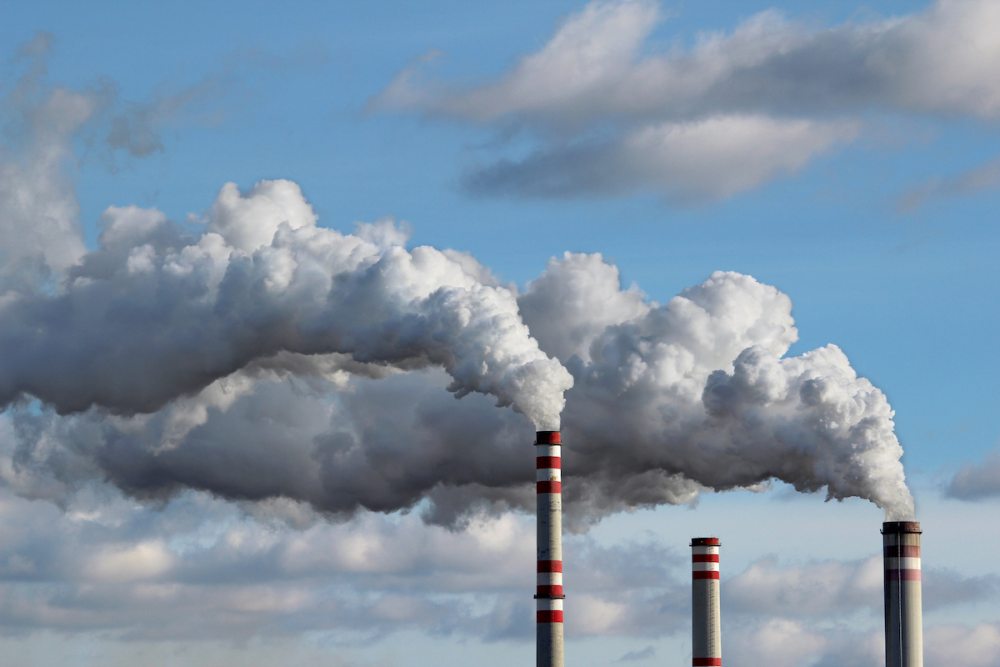
Colorado communities are constantly feeling the impacts of climate change like longer and hotter summers, a rise in extreme wildfires, and an increase in polluted air. It's imperative our state equitably moves away from fossil fuels and toward a clean energy economy. That means retiring the biggest, most costly sources of pollution first – like Xcel Energy's Comanche 3 coal unit in Pueblo. We must replace this coal unit with cheaper, clean energy as soon as possible! Xcel has asked the Colorado Public Utilities Commission to approve a plan to burn coal at the Comanche 3 coal unit until 2035 – five years longer than any other coal plant in Colorado. But that would be a disaster for our communities and our climate.
Here are five reasons why it’s time for this unreliable, expensive, and unbelievably polluting coal plant to go.
1. CLIMATE: Comanche 3 is the single largest source of carbon pollution in the state of Colorado.
The Comanche 3 coal unit is Colorado’s largest coal unit at 750 megawatts (MW) of generating capacity. In 2021, Comanche 3 emitted 4.2 million tons of carbon dioxide into the atmosphere, making it Colorado’s largest source of carbon dioxide emissions. At a time when Colorado is working hard to reduce greenhouse gas pollution to combat climate change, there’s no justification for running this coal plant longer than any other in the state.
2. AIR TOXICS: Together, Comanche 1, 2, and 3 are responsible for 84 percent of toxic chemical pollution in the Pueblo area.
According to the Environmental Protection Agency’s Toxics Release Inventory (TRI), in 2019, the Comanche coal plant as a whole released over two million pounds of toxic chemicals in Pueblo, making it responsible for the lion’s share of toxic chemical pollution in the area. Since the Comanche 3 unit is larger than units 1 and 2 combined, it’s safe to assume that Comanche 3 emits a majority of those two million pounds of toxic pollution.
3. ENVIRONMENTAL JUSTICE AND RACISM: Comanche 3 doesn’t power homes in Pueblo, the community it pollutes.
Xcel Energy’s Comanche 3 coal unit is located in Pueblo, a majority low-income, Latino community that gets its electricity from a utility called Black Hills Energy. So while Xcel pollutes the Pueblo community with pollution such as nitrogen oxide and sulfur dioxide, local residents don’t even get electricity from the coal plant. Instead, the power is exported to whiter communities served by Xcel on Colorado’s Front Range.
This is a textbook example of environmental racism, the name for the phenomenon in which major polluters like Comanche 3 are more likely to be located in communities of color than white communities.
4. RELIABILITY: Comanche 3 is Xcel Energy’s most unreliable generating unit in the state of Colorado.
The Comanche 3 coal unit has been plagued with breakdowns since it was built in 2010, including experiencing three major, unplanned outages in just the last two years. According to a March 2021 investigation conducted by the Colorado Public Utilities Commission (PUC), the unit has been offline an average of 91.5 days each year since it began operating, and only 27 percent of those outages were planned. The same report found that Comanche 3 is Xcel Energy’s least reliable electricity generating unit in Colorado, even though Xcel Energy insists that the coal unit is needed to ensure that electricity is reliably available.
The unit went offline for the entire year between January 2020 and 2021 because of two separate outages. Currently, the unit is offline again due to a generator failure that occurred the first week of February 2022 and is still under investigation. How can we be expected to count on a coal plant that is consistently so unreliable?
5. COST: Comanche 3 has been 45 percent more expensive to build and operate that Xcel Energy originally planned.
The 2021 PUC investigation into Comanche 3 found that it has experienced enormous cost overruns, costing 45 percent more than expected. Xcel Energy’s upfront capital cost projection for Comanche 3 was $680 million, but the unit ended up costing $784 million to build, with an additional $72 million in incremental capital costs between 2011 and 2020.
Additionally, the forecasted levelized cost of energy (LCOE), or average operational cost of producing electricity, for Comanche 3 when it was proposed in 2004 was $45.70, yet the actual LCOE has been $66.25 per megawatt hour. As a comparison, the last time Xcel Energy issued a Request for Proposals for new electricity generating resources in Colorado in 2017, the average cost of energy in wind companies’ bids was $19.30 a megawatt hour.
For the sake of the climate, our health, our energy bills, and the reliability of our electricity, Xcel needs to make plans to replace the Comanche 3 coal unit with clean energy as soon as possible. Xcel can and should do this alongside a robust community assistance plan that helps to replace lost tax revenue in the Pueblo area, as well as collaboration with workforce leaders to make the transition as smooth as possible for the 77 people who work at Comanche 3.